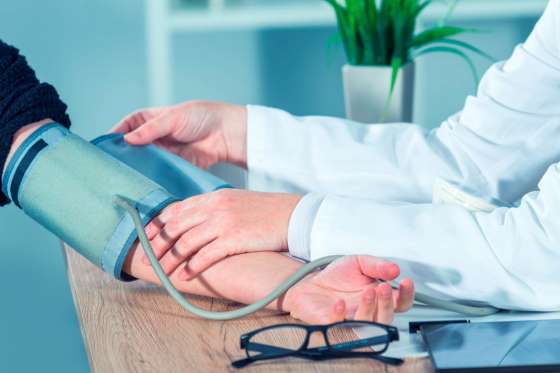LOWERING YOUR SYSTOLIC BLOOD PRESSURE
Try these tweaks to improve your systolic pressure, ensure an accurate reading, and potentially extend your life.
In recent years, doctors have increasingly focused on the lifesaving benefits of lowering your systolic blood pressure. (That’s the top number. The bottom number, diastolic blood pressure, tends to fall naturally after age 55.) A landmark 2015 study showed that volunteers who lowered their systolic pressure to 120 mm Hg had a 25 percent lower risk of heart attack and a 43 percent lower risk of death from cardiovascular causes compared with those whose systolic pressure was 140.
Losing weight, eating less sodium, exercising more, and quitting smoking are among the best non-medicinal ways to reduce your systolic blood pressure substantially and for the long term. Your doctor might also prescribe medication. But if you need extra help reaching your goal, these lesser-known tricks can shave off a few points in the doctor’s office and beyond. In some cases, the effects will be temporary but will eliminate artificial inflation, making your readings more medically trustworthy.

SIT PROPERLY
Next time a nurse tells you to hop up on the exam table so he or she can take your blood pressure, don’t. ‘When you’re sitting with your feet dangling, you’re almost between sitting and standing. This can affect your reading because your blood pressure is different when you’re standing versus lying down,’ says Nieca Goldberg, MD, medical director of the Joan H. Tisch Center for Women’s Health at New York University Langone Medical Center. Instead, sit in a chair with your back flat against the chair back and your feet flat on the floor (no leg crossing allowed!).

SUPPORT YOUR ARM
If your arm is too high or too low during your reading, your heart might have to pump harder to keep blood flowing, which can raise your blood pressure. ‘Your arm should be positioned at heart level and flat on a table or supported by the person taking your pressure,’ says Dr. Goldberg.

BREATHE SLOWLY
In a study of more than 21,000 adults in Japan (some with normal and some with high blood pressure), patients who took six deep breaths in 30 seconds while waiting to see a doctor saw a more than three-point drop in their systolic blood pressure compared with patients who rested for 30 seconds without deep breathing. Getting in the habit of a daily deep-breathing session can extend these effects. Other studies have found that patients who routinely practice slow breathing, some using an FDA-approved device called Resperate to guide them, had consistently lower blood pressure over an eight- or nine-week period.

NIBBLE DARK CHOCOLATE
Studies of 856 healthy participants show that flavanol-rich cocoa products can lower systolic blood pressure by four points in those with hypertension. You would need to consume at least 30 mg of flavanols per day for at least two weeks to see the effects. Unfortunately, most manufacturers don’t list flavanol content, but in general, dark chocolate and natural unsweetened cocoa powder contain more flavanols than milk chocolate and Dutch-processed cocoa powder do.

GET A GRIP
A very small 2014 study demonstrated that healthy adults who performed just 15 minutes of simple hand-grip exercises three times a week for ten weeks reduced their systolic pressure by almost ten points. You can find inexpensive hand grippers online or at your local sporting goods store.












